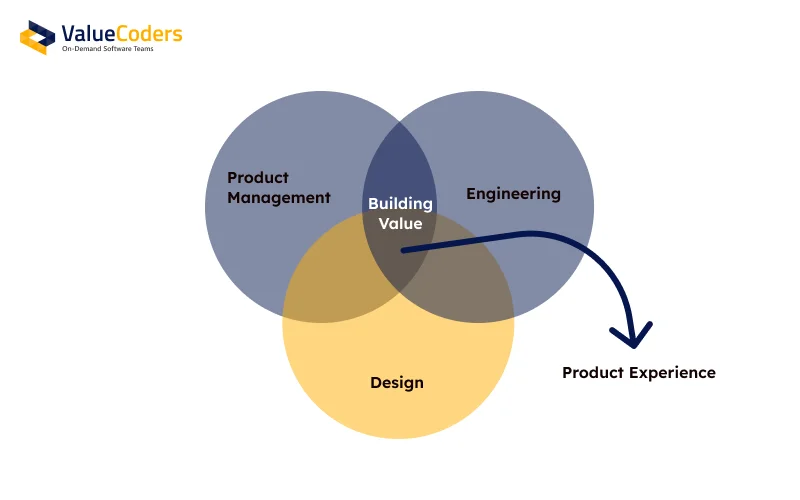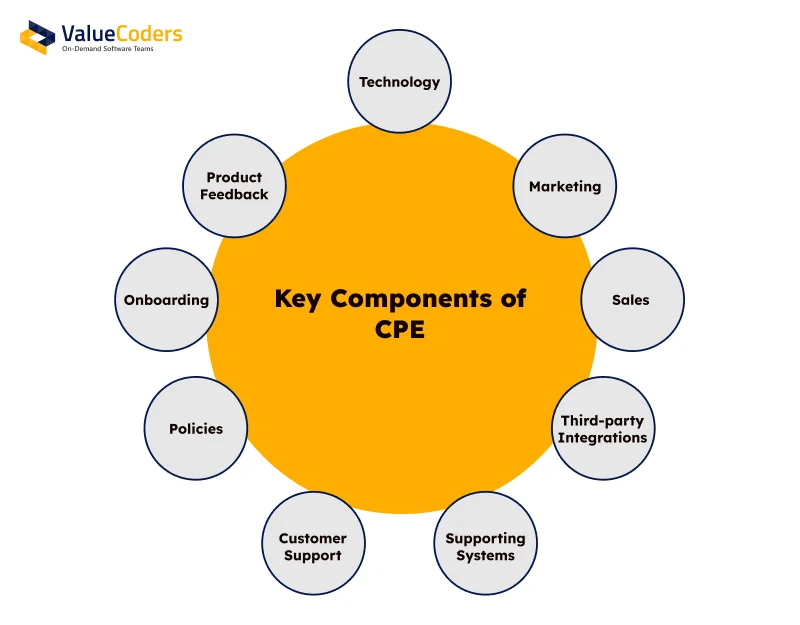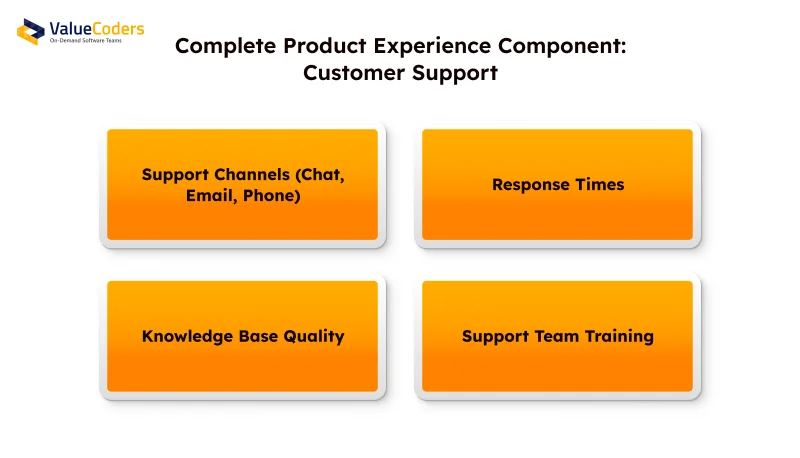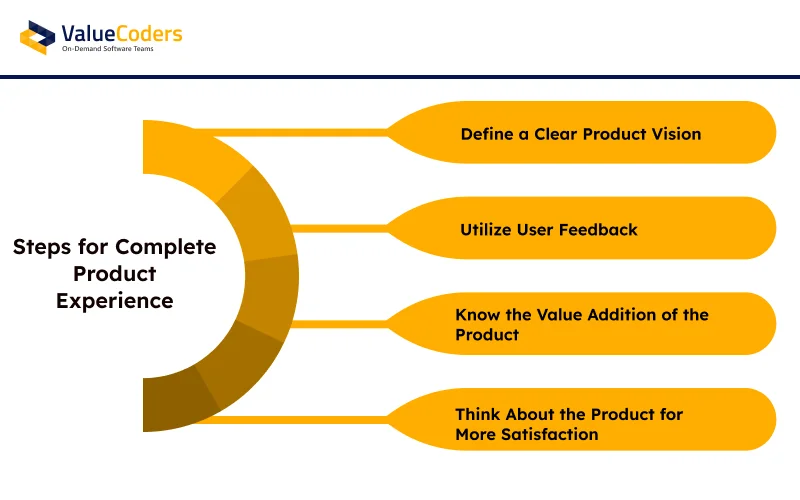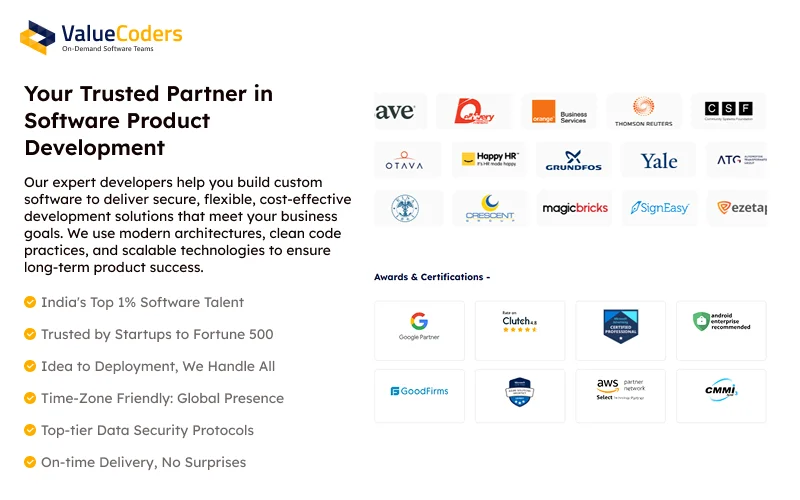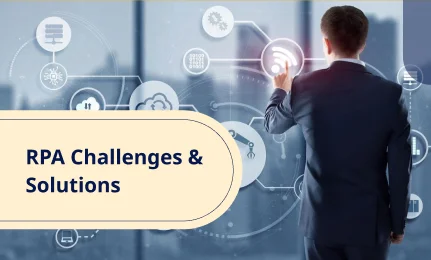Building a product with impressive features and simply selling it to customers is not sufficient in this competitive business landscape.
Modern businesses must not focus only on their product’s features and functionality. They should go beyond and be cautious about how customers actually experience their product as a whole.
Businesses often face various challenges, such as higher customer churn rates, disjointed customer journeys, lack of marketing matching with product experience, etc., when they opt for a complete product experience.
Hence, there is a great demand for CPE in today’s competitive market, where products with similar features fight for the same customers. The only difference maker is the overall product experience. Let’s explore CPE in detail here.
Understanding What is CPE in Product Development
According to a PWC report, 73% of customers say customer experience is the first thing they consider when purchasing a product. As per the Gartner report, 80% of businesses are expected to compete mainly based on CX.
The concept of a CPE in product development includes everything a customer encounters when interacting with a product and company, i.e., from marketing channels to their onboarding process, customer support interactions, and so on.
CPE recognizes that customers don’t separate your product from how they learn about it, buy it, set it up, or get help with it. For them, it is all one experience. Hence, your product is not just what you build; it is everything that surrounds it, too.
- Traditional product management might focus mainly on features and functions
- CPE includes all touchpoints that shape how users feel about and engage with product
CPE as A Holistic Approach to Product Development
In this modern business era, a product is not known only for its tangible features or functionality. It is the complete journey a customer goes through when meeting with your company and product. This journey starts before making a purchase and continues long after.
A holistic approach to product development refers to seeing your product through the customer’s eyes. There are various reasons to use this holistic approach, as given below:
- Gain customer trust: Customers can very well sense if the company genuinely takes care of solving their problems or just selling their product.
- Drive advocacy: A positive product journey encourages customers to recommend your products to other people.
- Boost loyalty: Companies that work on the entire customer experience journey build long-term customer relationships.
Companies with the strongest growth now treat every customer touchpoint as part of a unified experience. They break down silos between departments and align everyone around, delivering value throughout the entire customer lifecycle.
We help businesses build CPE-driven software that converts better and retains users longer, having 20+ years of results.
Core Components of Complete Product Experience
After understanding what is CPE, it’s time to explore more. To understand CPE fully, we need to examine its essential components. Each element contributes to how customers perceive and engage with your product:
1. Technology
Technology represents the basic functionality and aspects of the product in which the customers have invested in your product. It also deals with the technology you implement with your product to provide its functionality.
People today want the product technology to be not only useful but also comfortable and smooth for them. Therefore, it is essential to make sure that the technology you implement in your product offers a smooth experience to the users.
The technological foundation of your product directly impacts the customer experience. This includes:
- The core product itself and its features
- Speed and performance
- Reliability and uptime
- Technical architecture that allows for future growth
- Code quality that prevents bugs and glitches
Example
When Netflix redesigned its technical infrastructure to ensure seamless streaming across different devices and internet speeds, they weren’t just making technical improvements; they were enhancing a crucial component of their CPE.
2. Marketing
This component is all about how your customers come to know about your product and how you will be bringing new customers on board.
Here, you must be present everywhere and everywhere on every platform, and you must have a sufficient quantity of content for showcasing your product and inviting new users to take a test run.
You must work on social media, review sites, and your own blogs about your product and how it serves your consumers to meet their objectives.
How customers learn about your product shapes their expectations and initial impression:
- Brand messaging and positioning
- Educational content about product value
- Promises made through marketing materials
- Visual identity and design language
Examples
Notion’s marketing presents the product as a flexible workspace rather than simply a note-taking app.
A popular social media platform, Instagram can represent your brand to billions of users.
3. Sales
This aspect is concerned with informing the prospects about your product via your sales representatives and informing them how it can benefit them.
Your sales reps should be skilled enough to showcase your product in an excellent manner, illustrate all the subscription plans for your product, and encourage users to use your product.
The purchasing process forms a critical part of the overall experience:
- Sales conversations and demonstrations
- Pricing structure and transparency
- Contract terms and negotiations
- Handoff to implementation teams
Example
Salesforce’s sales process includes personalized demos that focus on solving the prospect’s specific problems rather than generic feature showcases, making the sales experience itself valuable.
4. Third-party Integrations
Third-party integrations aid in integrating your product with other tools, such as CRM tools and other office tools. The aim is to simplify the users’ lives and make their tasks smooth by giving them simple yet powerful third-party integrations.
How your product connects with other tools in a customer’s workflow matters tremendously:
- API accessibility and documentation
- Integration marketplace or partnerships
- Data flow between systems
- Setup process for connections
Example
Slack’s extensive integration capabilities allow users to connect their communication hub with hundreds of other work tools, creating a seamless workflow across their digital workspace.
5. Supporting Systems
Supporting Systems are internal systems you utilize along with your product to present the product experience to the consumers. The supporting systems are unobservable but play a massive role in influencing the Complete Product Experience.
The infrastructure that supports your product affects reliability and scalability:
- Database performance
- Security measures
- System notifications
- Analytics capabilities
Example
Dropbox’s background sync system operates quietly but ensures files remain up-to-date across devices; a supporting system that’s critical to the overall product experience.
Let our product strategists audit, optimize, and implement a CPE-focused roadmap tailored to your business goals.
6. Customer Support
Customer Support encompasses everything you do to assist your product users in utilizing the product and solving their problems. ‘
You need to make your customer service and support mechanism strong enough to resolve the users’ problems in time and assist them in best utilizing your product with all the facilities.
How customers get help when they need it:
- Support channels (chat, email, phone)
- Response times
- Knowledge base quality
- Support team training
Example
Zapier offers multi-channel support, including extensive documentation, help videos, and responsive chat support, recognizing that getting help is part of using their product.
7. Policies
This aspect is also crucial to make sure that your product users are able to use your product easily and solve their problems.
Policies give a guidelines to the employees to act on customers’ demands. Make sure that the policies you create are easy to use and help in delivering an excellent after CPE.
The rules and guidelines that govern product usage:
- Terms of service
- Privacy policies
- Refund procedures
- Usage limitations
Example
Apple’s clear privacy policies and transparent App Store guidelines give users confidence about how their data is used and what they can expect.
Also Read – Navigating AI and ML in Banking & Insurance
8. Onboarding
Onboarding is a significant user touchpoint where you greet your newly joined users. It is concerned with training the converted users on how to use the product.
It is essential to give a seamless onboarding experience to the new users as it leaves a long-lasting impression on the users.
How new users learn to use your product:
- Welcome sequences
- Tutorial content
- First-use experiences
- Setup assistance
Example
Canva’s interactive onboarding walks new users through creating their first design with tooltips and suggestions, removing friction from the learning curve.
9. Product Feedback
Product Feedback is a crucial part of CPE. It informs you about how your product users feel and think about your product and your product experience. It refers to measuring product experience strategy in User Satisfaction and loyalty.
Measuring product experience is necessary in order to understand how much your product is capable of making the users satisfied and happy.
How you gather and respond to user input:
- Feedback collection methods
- Response to suggestions
- Updates based on user needs
- Communication about changes
Example
Figma regularly incorporates user feedback into product updates and clearly communicates how community suggestions have shaped new features.
Achieve frictionless adoption and user satisfaction with our battle-tested development process and 98% project success rate.
Best Practices For Complete Product Experience
Creating an outstanding CPE requires intentional focus across multiple dimensions:
1. Define a Clear Product Vision
Start with a compelling vision that puts customer needs at the center:
- Document what success looks like for your users
- Create journey maps that identify key touchpoints
- Establish experience principles that guide decision-making
- Share this vision widely across the organization
When everyone understands the target experience, teams make better decisions about their specific areas of responsibility.
2. Utilize User Feedback
Feedback should inform every aspect of the product experience:
- Implement multiple feedback channels (surveys, interviews, usage data)
- Close the loop with customers when acting on their input
- Watch for patterns across different touchpoints
- Test changes with real users before full implementation
The most valuable insights often come from watching how users actually interact with your product, not just what they say about it.
3. Know the Value Addition of the Product
Clarity about your product’s core value helps align all experience elements:
- Identify your product’s unique advantages
- Understand which problems you solve better than alternatives
- Focus on experience improvements to enhance core value delivery
- Communicate this value consistently across all touchpoints
When teams clearly understand what makes your product valuable, they can make better decisions about supporting that value.
4. Think About the Product for More Satisfaction
Look beyond features to consider emotional outcomes:
- Map the emotional journey alongside functional steps
- Identify moments that create delight or frustration
- Design for how users want to feel when using your product
- Celebrate customer success stories
Products that connect emotionally with users create stronger loyalty than those that merely provide utility.
Also Read – Top 11 Software Product Development Companies in Delhi-NCR
Create a High-Quality CPE with ValueCoders
Developing a strong Complete Product Experience requires the right partner. Our product managers play a central role in supporting the Complete Product Experience. They look beyond feature development to consider every aspect of how customers interact with the product.
ValueCoders helps businesses build products with exceptional user experiences through:
- Software Product Development Services that consider the entire customer journey from the start. Our development teams think beyond code to consider how technical decisions impact the overall experience.
- MVP Development Services that establish a solid foundation for your CPE. We help you identify the most critical experience elements to include in your minimum viable product.
- Product UI/UX Design Services focused on creating intuitive, delightful interactions. Our designers craft interfaces that reflect your brand promise and make complex functionality accessible.
- Product Consulting Services that bring expertise in building comprehensive product experiences. Our consultants help you identify gaps in your current CPE and develop strategies to address them.
- Digital Transformation Services to innovate your business operations with AI-driven solutions, cloud adoption, and automation. Our experts help modernize legacy systems and deploy digital strategies to enhance customer experiences.
- Marketing and Sales Services to help accelerate your online presence and bring meaningful results. Our digital marketing experts provide data-driven strategies, performance marketing, and SEO optimization consulting to boost business growth.
- Startup Product Development Services tailored to help new ventures create compelling product experiences even with limited resources. We help startups focus on the CPE elements that will drive early adoption and customer retention through CPE.
By partnering with experienced product development specialists, companies can ensure every aspect of their CPE works together harmoniously.
Partner with our 675+ experts who build intuitive, end-to-end product journeys that customers enjoy using.
Conclusion
The Complete Product Experience represents a fundamental shift in how successful companies approach product development. It acknowledges that customers don’t separate your product into discrete parts; instead, they experience it as a whole.
As markets grow more competitive and customer expectations rise, the Complete Product Experience becomes the key differentiator. Products with similar features can deliver radically different experiences based on how well all the components work together.
For businesses seeking growth, focusing on CPE isn’t optional; it’s essential. You can contact us to craft innovative products using our CPE strategy.
At ValueCoders We have been delivering software product development services since 2004 to our global clients, and are counting on more successful projects. Contact us today!

